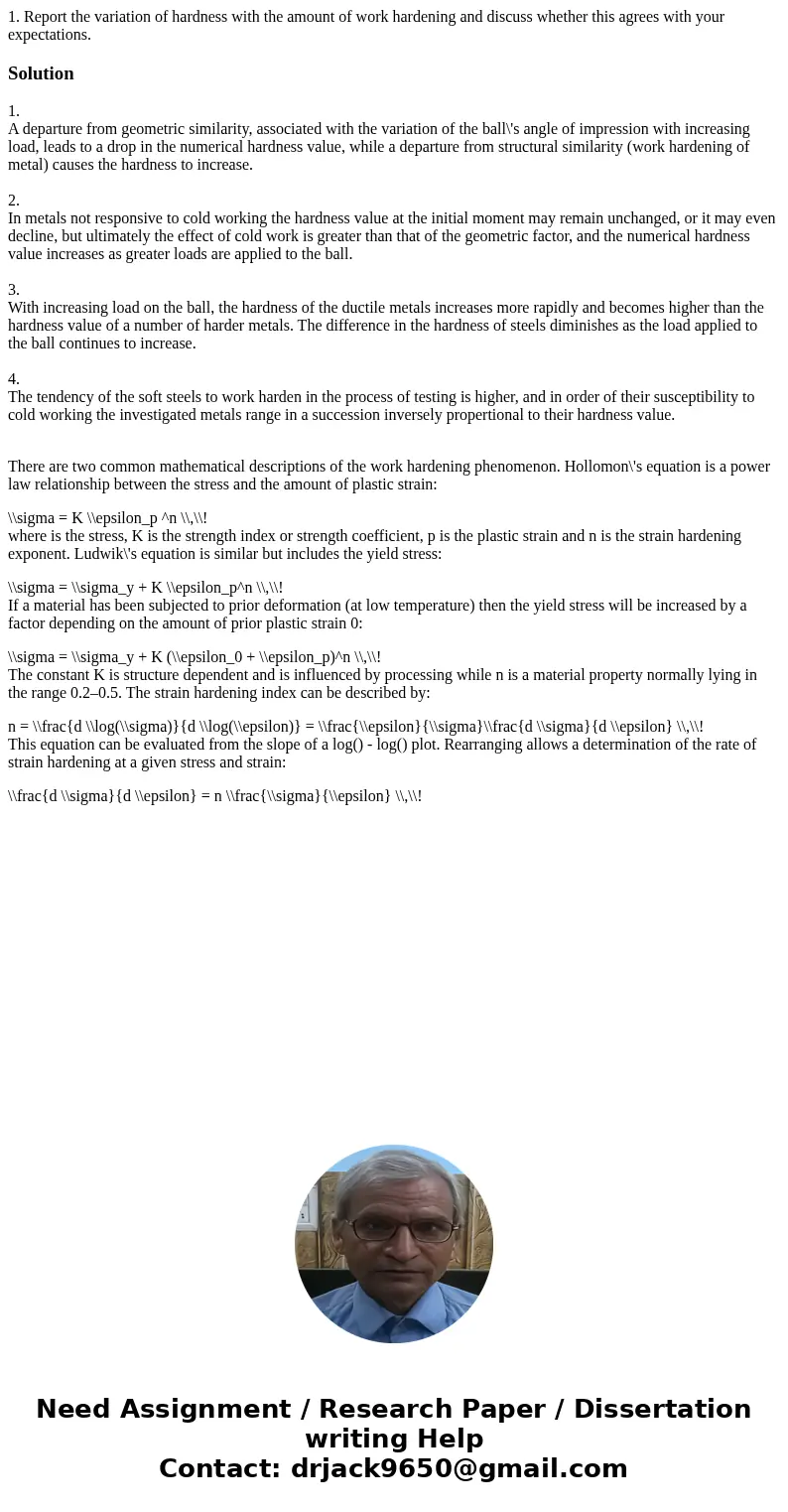1 Report the variation of hardness with the amount of work h
1. Report the variation of hardness with the amount of work hardening and discuss whether this agrees with your expectations.
Solution
1.
A departure from geometric similarity, associated with the variation of the ball\'s angle of impression with increasing load, leads to a drop in the numerical hardness value, while a departure from structural similarity (work hardening of metal) causes the hardness to increase.
2.
In metals not responsive to cold working the hardness value at the initial moment may remain unchanged, or it may even decline, but ultimately the effect of cold work is greater than that of the geometric factor, and the numerical hardness value increases as greater loads are applied to the ball.
3.
With increasing load on the ball, the hardness of the ductile metals increases more rapidly and becomes higher than the hardness value of a number of harder metals. The difference in the hardness of steels diminishes as the load applied to the ball continues to increase.
4.
The tendency of the soft steels to work harden in the process of testing is higher, and in order of their susceptibility to cold working the investigated metals range in a succession inversely propertional to their hardness value.
There are two common mathematical descriptions of the work hardening phenomenon. Hollomon\'s equation is a power law relationship between the stress and the amount of plastic strain:
\\sigma = K \\epsilon_p ^n \\,\\!
where is the stress, K is the strength index or strength coefficient, p is the plastic strain and n is the strain hardening exponent. Ludwik\'s equation is similar but includes the yield stress:
\\sigma = \\sigma_y + K \\epsilon_p^n \\,\\!
If a material has been subjected to prior deformation (at low temperature) then the yield stress will be increased by a factor depending on the amount of prior plastic strain 0:
\\sigma = \\sigma_y + K (\\epsilon_0 + \\epsilon_p)^n \\,\\!
The constant K is structure dependent and is influenced by processing while n is a material property normally lying in the range 0.2–0.5. The strain hardening index can be described by:
n = \\frac{d \\log(\\sigma)}{d \\log(\\epsilon)} = \\frac{\\epsilon}{\\sigma}\\frac{d \\sigma}{d \\epsilon} \\,\\!
This equation can be evaluated from the slope of a log() - log() plot. Rearranging allows a determination of the rate of strain hardening at a given stress and strain:
\\frac{d \\sigma}{d \\epsilon} = n \\frac{\\sigma}{\\epsilon} \\,\\!

 Homework Sourse
Homework Sourse